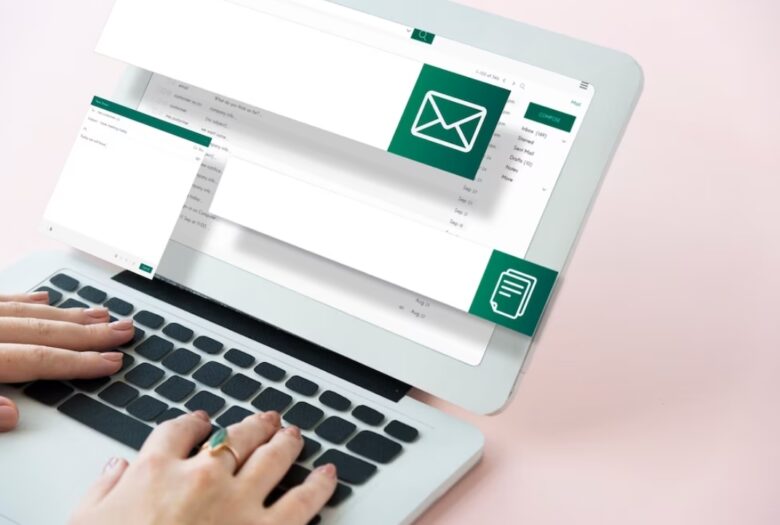Effective communication is crucial for online businesses in today’s fast-paced digital landscape. Among the various tools available, email stands out as a powerful means of reaching and engaging customers. In this blog post, we will explore the key types of emails utilized by online businesses, unveiling their purpose and strategies for effectiveness.
First, we’ll delve into welcome emails, setting the tone for the customer journey and showcasing your brand’s value proposition. Next, promotional emails will take center stage, driving sales and creating a sense of urgency through compelling offers and persuasive copy. Customer nurturing emails play a vital role in building trust, fostering loyalty, and enhancing customer lifetime value.
Transactional emails are the unsung heroes, providing functional information while leaving a lasting impression on the customer experience. Finally, we’ll discuss re-engagement emails, which revive dormant relationships and entice customers back into active engagement.
By understanding and leveraging these email types, you can enhance customer engagement, drive conversions, and foster long-term loyalty. Let’s dive in and explore the world of online business emails, uncovering the strategies that will help you make the most of this powerful communication channel.
Contents
Delving into the Essential Email Types Employed by Online Businesses
In the digital era, where online businesses thrive, effective communication plays a vital role in engaging customers and driving conversions. Emails have emerged as a powerful tool for businesses to connect with their audience. This article will delve into the key types of emails employed by online businesses to enhance customer relationships, boost sales, and foster brand loyalty. To learn more about effective email marketing strategies, click here.

Source: wearearise.com
Welcome Emails
Welcome emails are an important part of establishing a strong connection between online businesses and their new subscribers or customers. These emails create a positive initial impression by expressing gratitude for the customer’s interest and providing a warm introduction to the brand.
For example, imagine a customer signing up for a newsletter on a clothing retailer’s website. Shortly after the signup, they receive a welcome email that starts with a warm greeting, thanking them for joining the brand’s community. The email then proceeds to provide a brief overview of the company, highlighting its commitment to quality, style, and customer satisfaction.
In addition to the introduction, the welcome email may showcase a selection of the brand’s popular products or exclusive offers to entice the customer to explore further. It can also include a call-to-action, such as inviting the customer to browse the online store, take advantage of a special discount, or personalize their preferences for a more tailored experience.
Abandoned Cart Emails
Abandoned cart emails aim to recover potentially lost sales by reminding customers about the items they left behind in their online shopping carts. These emails usually include a friendly message, a summary of the items, and sometimes even offer incentives like discounts or free shipping to encourage customers to complete their purchases.

Source: pipedrive.com
Transactional Emails
Transactional emails play a critical role in online businesses as they are triggered by specific customer actions, such as making a purchase, confirming an order, or requesting a password reset. These emails serve a functional purpose by providing essential information related to the transaction, including order details, shipping notifications, and invoices.
For example, when a customer completes a purchase on an e-commerce website, they receive a transactional email that confirms their order. This email contains a summary of the purchased items, their prices, and any applicable discounts or promotions. It also includes information about shipping, such as estimated delivery dates and tracking numbers, ensuring transparency and keeping the customer informed about the status of their order.
However, transactional emails offer more than just order confirmation. Savvy businesses can leverage these emails to enhance the customer experience and drive additional sales. For instance, they can include personalized recommendations for related products or services that complement the customer’s purchase. By cross-selling or upselling in transactional emails, businesses can effectively increase the average order value and encourage repeat purchases.
Promotional emails
Promotional emails serve as powerful tools for online businesses to drive sales and generate awareness about special offers, discounts, or new product launches. These emails are strategically crafted and sent to a targeted audience with the intention of capturing their attention and motivating them to take action.
When creating promotional emails, businesses focus on crafting compelling copy that highlights the value and benefits of the promoted products or services. They use persuasive language and storytelling techniques to engage the recipients and create a sense of urgency or excitement. The inclusion of enticing visuals, such as high-quality product images or eye-catching graphics, further enhances the appeal of the email.
To maximize the impact of promotional emails, personalization techniques are employed. By addressing recipients by their names and tailoring offers based on their preferences or purchase history, businesses create a sense of individualized attention and relevance. For example, a clothing retailer may send a promotional email to a customer who previously purchased women’s apparel, featuring personalized recommendations for similar styles or exclusive discounts on their preferred brands.

Source: freepik.com
Re-Engagement Emails
Re-Engagement emails are sent to inactive or dormant subscribers or customers to reignite their interest in the business. These emails may offer special incentives, personalized recommendations, or exclusive content to encourage recipients to re-engage with the brand. By nurturing these relationships, businesses can potentially win back lost customers and increase overall engagement.
Newsletter Emails
Newsletter emails serve as a popular and effective method for online businesses to regularly engage with their subscribers and provide them with valuable content. These emails go beyond promotional messages and focus on delivering industry news, educational articles, helpful tips, or exclusive insights to subscribers.
By consistently delivering relevant and interesting information through newsletters, businesses have the opportunity to establish themselves as authorities in their field. For example, a technology company may send a newsletter that includes the latest industry trends, updates on new technologies, and informative articles explaining complex concepts in a user-friendly manner.
Newsletters offer a way for businesses to nurture long-term relationships with their audience. By consistently providing valuable content, they build trust and credibility among their subscribers. This can lead to increased customer loyalty and the potential for word-of-mouth recommendations.

Source: birdeye.com
Customer Feedback Emails
Online businesses value customer feedback as it helps them improve their products, services, and overall customer experience. Customer feedback emails are sent to gather insights, reviews, or ratings from customers after they have made a purchase. These emails demonstrate that the business cares about its customers’ opinions and can provide valuable data for future improvements.
Conclusion
Emails are an integral part of the online business ecosystem, serving various purposes throughout the customer journey. From welcome emails to re-engagement campaigns, each type of email plays a unique role in engaging customers, driving sales, and fostering brand loyalty. By leveraging these types of emails effectively, online businesses can optimize their communication strategies and build strong and profitable relationships with their audience.
